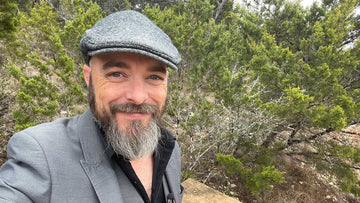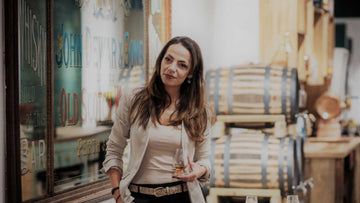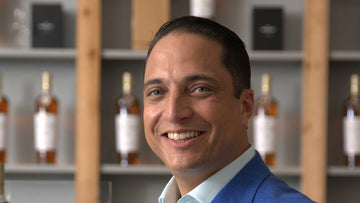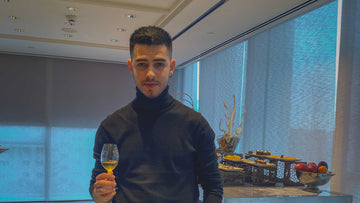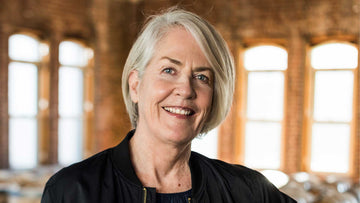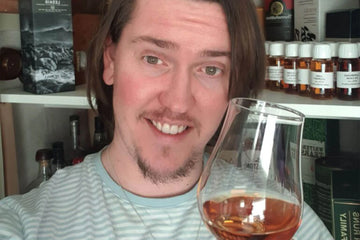Scotch Whisky & Royal Warrants
King Charles III, who will be crowned at Westminster Abbey on 6 May, is well-known as a Scotch whisky aficionado. As Prince of Wales, he visited many of Scotland’s distilleries and in 1994 granted a Royal Warrant of Appointment to D Johnston & Co (Laphroaig) Ltd, suppliers of his favourite single malt. Should he decide to renew the Royal Warrant as King, of course, the legend and the coat of arms that appears on the Laphroaig label will be altered accordingly, and the distinctive three feathers heraldic badge of the Prince of Wales will no longer appear there.
Royal Warrants are granted to a named person at a company which supplies goods or services to the reigning monarch, or to grantors appointed by the monarch: in Queen Elizabeth II’s reign, the grantors were her husband Prince Philip, their son Prince Charles and Queen Elizabeth the Queen Mother. The warrants lapse two years after the demise of the grantor.
Many whisky companies have held Royal Warrants from monarchs over the years, and four companies held Royal Warrants from Queen Elizabeth at the end of her reign - John Dewar & Sons, producers of Dewar’s and the Aberfeldy single malt; Matthew Gloag & Son, parent company of Famous Grouse; The Lochnagar Distillery, the Diageo subsidiary which produces the single malt Royal Lochnagar, and John Walker & Sons of Johnnie Walker fame. The new King and grantors will announce the recipients of their own Royal Warrants in due course, and a select few Scotch whisky producers seem certain to receive appointments in the coming months.
An association with royalty is highly prized by British companies, conferring an aura of prestige on the business and its brands. For the Scotch whisky industry, the benefits of that association were first realised back to 1822, when George IV visited Edinburgh for a series of ceremonial events staged by the celebrated author and Scots patriot, Sir Walter Scott. The King was known for his love of white wines, champagne, port and brandy, but was happy to sample a glass or two of ‘Glenlivet’ – the generic name for Highland pot still whisky - which Sir Walter ensured was freely available at the celebrations.
Scott’s public relations coup ensured that Scotch, which had previously been associated in the popular imagination with illicit distilling and lawlessness, gained the ultimate mark of respectability as a drink for ‘the better sort’ and the place of whisky at the heart of Scotland’s national heritage and culture was established in the popular imagination. So too was the realisation of the great promotional value in establishing a regal connection with a particular distillery or brand.
The lesson was certainly learned by Henry Brett, a successful wine and spirit merchant in London who represented Captain William Fraser’s Brackla Distillery. Whether through Brett’s own connections, or perhaps the influence of Fraser’s landlord, the Earl of Cawdor, the distillery was brought to the attention of George IV’s brother and successor on the throne, William IV. In 1833 William granted the Captain the privilege to ‘use the Royal Arms on everything connected with his distillery, as a mark of approbation for the complete success which has attended his efforts to produce Highland whisky by licensed distillation…’. ‘Royal Brackla’ became the most famous and fashionable whisky in London, advertised in all the leading newspapers of the day as ‘The King’s Own Whisky.’
Captain William Fraser was the first Scotch whisky distiller to receive a Royal Warrant, from King William IV in 1833. His successor Queen Victoria first granted Fraser a Royal Warrant in 1838. Image courtesy of John Dewar & Sons Ltd.
Where Brackla led, others swiftly followed. The celebrated Captain Robert Barclay was first. In his youth, Barclay and the future King William had been members of the Fancy - the aristocratic followers of sports such as prize-fighting and horse-racing. It is said that he petitioned his old friend to grant him a Royal Warrant, but the King died before he could oblige. Whatever the truth, his partner in the Glenury Distillery was subsequently appointed ‘Distiller to Her Majesty’ – William’s niece, the young Queen Victoria - in March 1838.
Victoria was one of the greatest patrons of Scotch whisky makers. She granted Royal Warrants to both Brackla and Glenury and we know that her wine cellar at St James’ Palace was well-stocked with Islay whiskies in the 1840s. In 1848, ‘Long John’ MacDonald made an unsubtle play for a Royal Warrant, sending a cask of his Dew of Ben Nevis whisky to London to be broached by the Royal Family on the 21st birthday of the Prince of Wales. His gift did not prompt the hoped-for response, but John Begg of the Lochnagar Distillery in Aberdeenshire had greater success. That year, the Royal Family took possession of Balmoral Castle on the banks of the River Dee in Aberdeenshire, near Begg’s distillery. The Queen, her husband Prince Albert and their children visited and were clearly impressed by what they saw and tasted there: Begg received a Royal Warrant shortly afterwards.
Royal Lochnagar. Image courtesy of Diageo archives.
Whisky was freely available at social occasions when Victoria stayed at Balmoral, and the Queen enjoyed a dram herself – often taken in her tea. When she went on picnics in the bracing country air, her ghillie John Brown made sure to take along some whisky and water – he believed that ‘pure water would be too chilling’ for his Royal mistress.
By the late 19th century, blended Scotch had become one of the world’s most fashionable drinks, and this was reflected in the granting of Royal Warrants. John Dewar & Sons, for example, were granted the honour in 1893. Companies such as Chivas Brothers (1923) and John Walker & Sons followed. But in more recent times, one brand has stood out in terms of Royal favour.
John Dewar & Sons were first granted a Royal Warrant by Queen Victoria in 1893 and have subsequently received warrants from every crowned British monarch. Image courtesy of John Dewar & Sons Ltd.
Famous Grouse was among the whiskies stocked at Buckingham Palace and Queen Elizabeth’s husband, Prince Philip, is said to have insisted that it was available aboard the Royal train. The brands biggest fan, however, was the Queen’s sister. Princess Margaret is said to have kept a decanter of Famous Grouse on the drinks tray at her Clarence House residence in the 1950s, and she never lost her affection for the brand. She insisted that Famous Grouse was served at all the official engagements she attended. Even on an official visit to The Macallan Distillery, she declined the offer of a glass of the celebrated single malt, insisting on a glass of the blended Scotch instead. In 1984 the Queen appointed Matthew Gloag & Son, the brand’s parent company, as Scotch Whisky Blenders by Appointment to Her Majesty The Queen.
Famous Grouse has continued to enjoy Royal favour in recent years. William and Kate, when they were Duke and Duchess of Cambridge, opened The Famous Grouse Experience at the brand’s home, the Glenturret Distillery, in 2014. William is his father’s successor as Prince of Wales. Should he be named as one of the Royal Warrant grantors, as is expected, it seems very likely that a Scotch whisky supplier will feature in the list of businesses that are awarded Royal Warrants of Appointment to his household.

